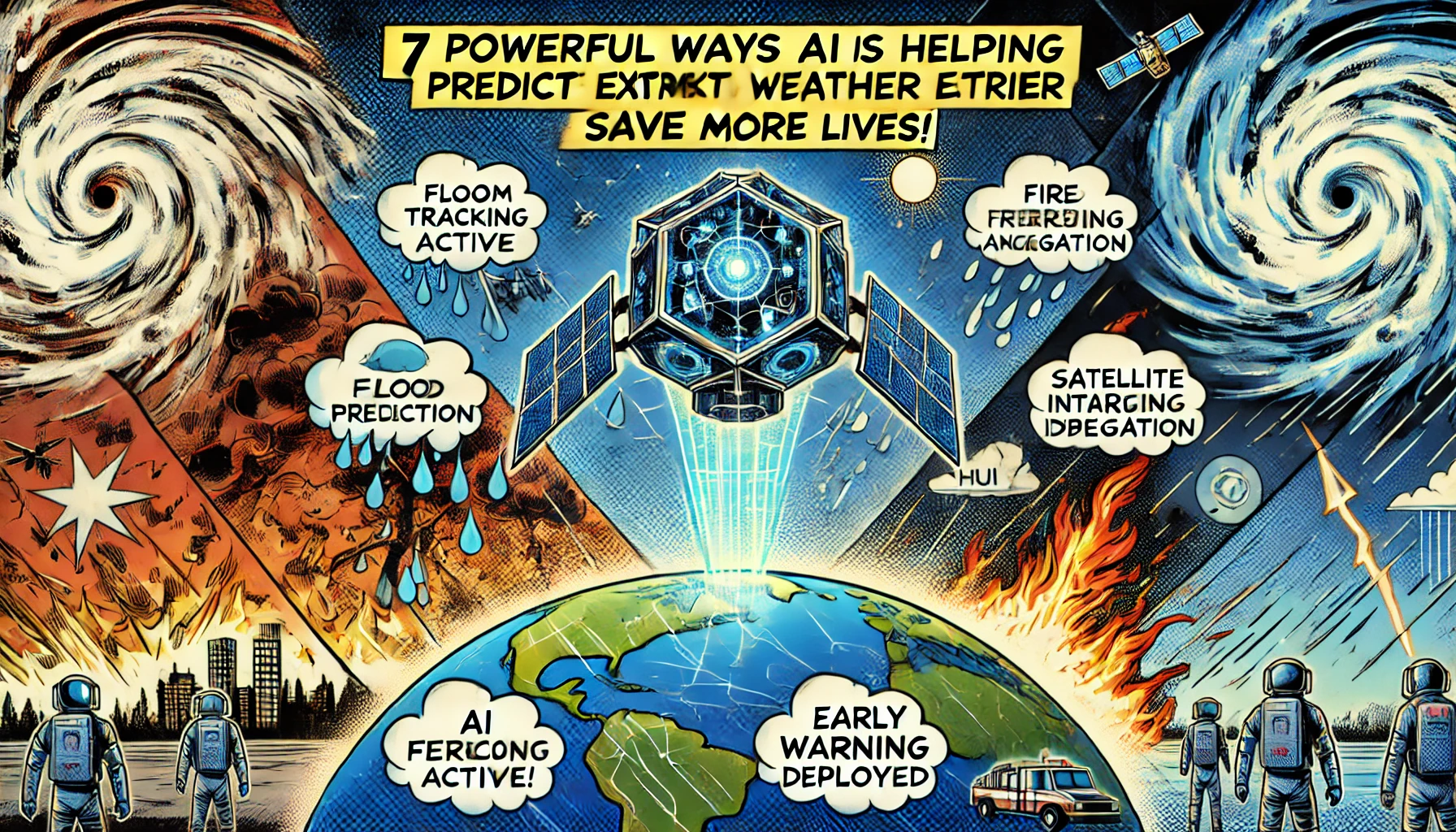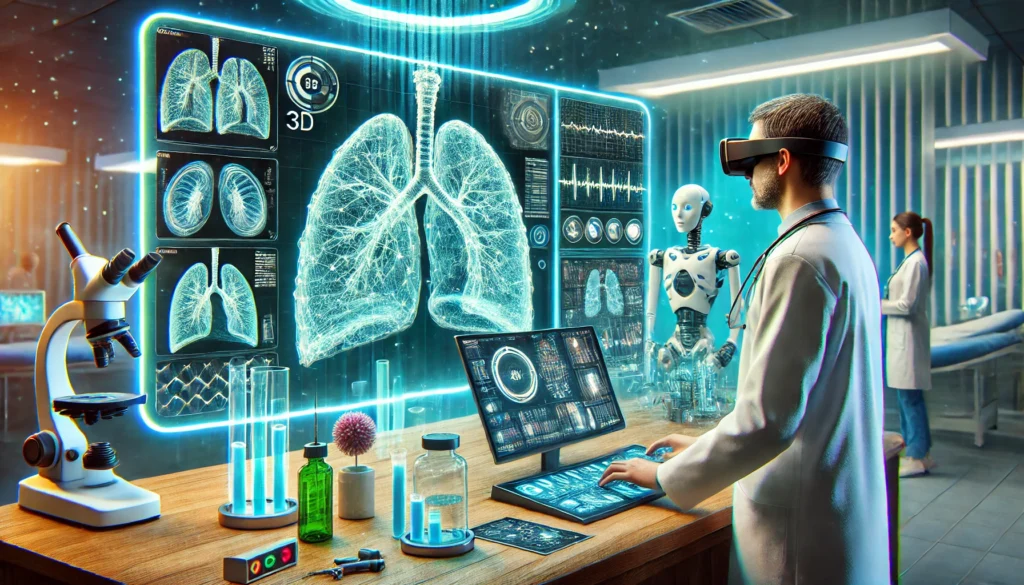AI Algorithms Help Predict Extreme Weather Events with Greater Accuracy
A new report from ClimateTech Today, published in April 2025, reveals that artificial intelligence (AI) is now playing a major role in predicting extreme weather events more accurately and earlier than ever before. Scientists are using smart AI programs to warn people about hurricanes, floods, wildfires, and heatwaves earlier—sometimes days or even weeks in advance—giving communities time to prepare and stay safe.
These AI systems are already being used in countries such as the United States, Germany, Japan, India, and Brazil. They analyze large amounts of weather data, including wind speed, rainfall, ocean temperatures, and atmospheric pressure. By studying this information quickly and carefully, AI tools can detect early warning signs of dangerous weather. This technology is becoming an important part of how we respond to climate change and protect lives.
Climate change is making extreme weather events happen more often and with more strength. Over the past few years, we’ve seen intense storms, deadly heatwaves, stronger hurricanes, and wildfires that burn longer than ever before. In the past, predicting these events took longer and wasn’t always accurate. With AI, that’s changing fast.
Before AI, meteorologists (weather scientists) used computer models, radar, and satellite images to predict the weather. While these tools worked, they sometimes missed key details or gave warnings too late. AI systems are trained using historical weather data and can improve over time. These systems learn from past storms, compare it with real-time data, and make smart predictions faster. As AI continues to grow, it could become one of the most powerful tools in climate science.
Key Facts & Details
How AI Makes Weather Forecasts Better:
- Processes Huge Amounts of Data: AI quickly reviews information from satellites, ground sensors, and past weather reports. This allows it to spot early warning signs of natural disasters that might go unnoticed by humans.
- Learns from Past Events: AI tools study information from previous hurricanes, floods, and wildfires. They learn what weather patterns led to those disasters, so they can recognize them earlier next time.
- Provides Quicker Forecasts: Traditional weather models might take hours to update. AI can deliver predictions in just minutes, which helps emergency services act sooner.
- Offers Localized Warnings: AI can predict which towns or neighborhoods are most at risk. This helps people know exactly when and where to take action.
- Alerts Communities in Advance: With earlier alerts, families can leave dangerous areas, move important items, and prepare emergency supplies in time.
What Experts Are Saying: “AI is a game-changer for disaster response,” said Dr. Rohan Malik, senior climate scientist at the Global Climate Monitoring Center. “Even gaining a few extra hours of warning can make a huge difference when a storm or wildfire is coming.”
Sarah Chen, a disaster relief leader in California, added, “Thanks to AI, we’ve been able to alert entire communities about floods earlier than ever before. That gives people a real chance to get to safety.”
Key Numbers from the Report:
- AI-based hurricane tracking improved accuracy by 25%.
- Flood alerts were sent out 6 to 12 hours earlier using AI.
- Over 50 countries are testing or using AI in their weather systems.
- Heatwave predictions with AI were 30% more reliable than older models.
- Wildfire risk zones are now mapped 40% faster with AI assistance.
Analysis & Impact
How AI Is Changing Climate Safety and Awareness:
- Stronger Emergency Plans: With better forecasts, emergency workers can prepare shelters, warn people in danger, and manage rescue teams more efficiently.
- Less Damage and Loss: When people know ahead of time, they can secure their homes, save important belongings, and stay out of harm’s way.
- Global Cooperation: Countries are working together to improve AI weather tools. They share information to help each other prepare for climate disasters.
- Climate Education: AI data is also being used in schools and communities to teach people how to stay safe during extreme weather events.
Challenges to Overcome:
- Not Enough Data in Some Places: Some areas, especially in poorer countries, don’t have enough weather stations or sensors. This makes it harder for AI to be accurate there.
- Cost of the Technology: Building and running powerful AI tools requires money, skilled workers, and equipment. Smaller or developing countries may struggle to afford it.
- Understanding AI Forecasts: People need to learn how to read and trust AI predictions. Public education campaigns can help people understand how AI helps protect them.
- Keeping AI Fair and Equal: Everyone should benefit from this technology, not just wealthy areas. Leaders must make sure AI tools are used in fair and helpful ways.
Resources & References
- ClimateTech Today – April 2025 AI Weather Report
- National Oceanic and Atmospheric Administration (NOAA) – AI in Weather Forecasting
- World Meteorological Organization – Climate and AI Initiatives
- Nature Climate Science – Machine Learning in Climate Prediction
- IPCC – Special Report on Extreme Weather and Preparedness
- UN Disaster Risk Reduction – AI and Climate Action Guidelines
Artificial intelligence is becoming a powerful partner in protecting people from dangerous weather. With faster, smarter predictions, AI can help save lives, reduce damage, and give people time to prepare. But we must also make sure this technology is available to all countries and communities, and that everyone knows how to use it wisely.
Do you think AI should be used more to predict storms, floods, or wildfires? Would you follow an AI weather alert to help keep your family safe? Let us know in the comments, and subscribe for more stories on how AI is helping to protect our planet! 🌎⚠️



